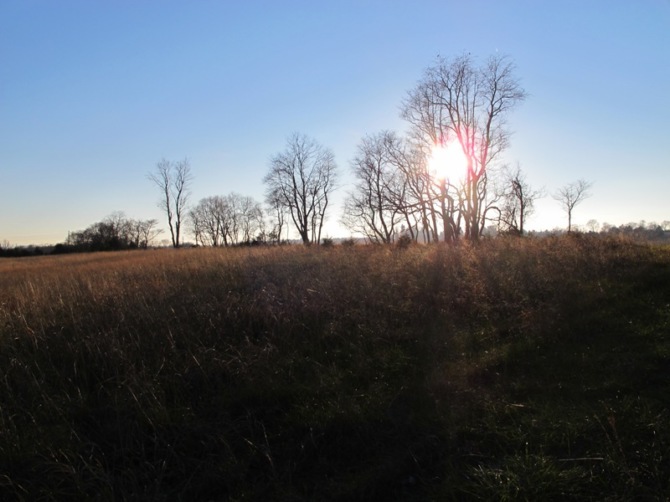Browse by Category
- All Categories
- 150th Anniversary
- Frederick County
- State Parks
- National Park Service
- Antietam
- Washington County
- Newcomer House
- 1865
- Literature
- Recreation
- Living History
- Museums
- Carroll County
- Historic Preservation
- Food/Dining
- Civil War Trails
- African American History
- Transportation
- Main Streets
- Education
- Women's History
- Geotrail
Bugle Call
The Economic Benefits of Preserving Civil War Battlefields
January 6, 2016

There are many significant benefits to preserving our nation's battlefields. In addition to teaching valuable lessons about our country's past and memorializing those who sacrificed their lives in service, battlefields act as a magnet for economic development through heritage tourism. According to the 2014 National Park Visitor Spending Effects report, the four major historical NPS units in the Heart of the Civil War (Antietam National Battlefield, C&O Canal National Historical Park, Harpers Ferry National Historical Park and Monocacy National Battlefield) generated over $127 million in 2014. Over five million visitors helped to support 1,912 jobs. Private organizations like The Conservation Fund partner with the National Park Service in many ways, enabling NPS to fulfill its mission of preserving the natural and cultural resources and values of the National Park System for the enjoyment, education, and inspiration of this and future generations. Note: This post originally appeared on the blog of The Conservation Fund and has been reprinted with permission.
As Director of the Civil War Battlefield Campaign (1988-2006), Frances H. Kennedy worked with The Conservation Fund and many partners to protect more than 9,000 acres of hallowed ground on America’s Civil War battlefields. Ms. Kennedy is the editor of both The Civil War Battlefield Guide and The American Revolution: A Historical Guidebook. The Conservation Fund dedicates these books’ royalties to historic preservation. The Fund’s president and CEO, Larry Selzer, recently spoke with Ms. Kennedy about a topic she pioneered and that is enjoying renewed focus today: the economic benefits of protecting historic battlefields.
Larry: The Conservation Fund’s founder Patrick Noonan launched the Civil War Battlefield Campaign in 1988 for the Fund to work in partnerships with foundations, communities, nonprofits, and public agencies to protect our nation’s historic battlefields. What do you see as some of the major accomplishments of this initiative?
Frances: I was honored to be the Director of the Civil War Battlefield Campaign. Since 1988, the Fund and its partners have protected 9,776 acres of hallowed ground in 85 projects in 13 states valued at $27,618,805. One of the first collaborations was between The Conservation Fund and the Richard King Mellon Foundation. We worked together to protect the battlefields at Antietam, Appomattox, Chancellorsville, Wilderness, Gettysburg, Kings Mountain, New Market, Manassas, and Petersburg. The Foundation donated the protected land to the National Park Service and to state agencies.
Larry: Protected battlefields provide visitors with the opportunity to discover history and also to explore nature. What other benefits are there for states and local communities?
Frances: Spending by visitors to battlefield parks generates and supports economic activity within nearby communities. Visitor spending supports jobs in many sectors in addition to the parks, including restaurants, hotels, motels, shops, and stores.
Larry: How can communities find useful information on the economic benefits of protected battlefields to help them build local support to preserve their battlefields?
Frances: In 1994, I coauthored a book with Douglas Porter, The Dollar$ and Sense of Battlefield Preservation, a handbook for community leaders that focuses on how protected battlefields generate jobs and income for the local economy, while providing open space that improves quality of life.
A great new resource for communities is the National Park Service web page and 2014 NPS Visitor Spending Effects Report. The Report documents the annual economic effects of NPS visitor spending as it moves through the Parks’ communities and on through the region. The data in the Report are powerful tools for leaders working to protect their community’s natural areas and historic land.
Larry: Can you give us one example of how a project from the Civil War Battlefield Campaign has positively impacted the surrounding area?Frances: An important one is Antietam National Battlefield in Maryland. According to the 2014 NPS Visitor Spending Effects Report, there were more than 337,000 visits to the battlefield in 2014 that resulted in total visitor spending of nearly $19 million. Visitor spending resulted in 274 jobs and an overall economic output (i.e., the total estimated value of the production of goods and services supported by visitor spending) of more than $25 million.
Another example is the Gettysburg National Military Park, where visitors spent an estimated $62.9 million in the area near the park, which supported 868 jobs and $83.8 million in economic output in 2014.
By working with our partners to protect our nation’s hallowed ground, we honor the soldiers and provide visitors—from America and from around the world—with opportunities to learn about the Civil War and its importance in our nation’s history.
Photos from top: View from the Tidball Trail at Antietam National Battlefield; a visitor poses at the Newcomer House, photo by Andrea Wittig.
